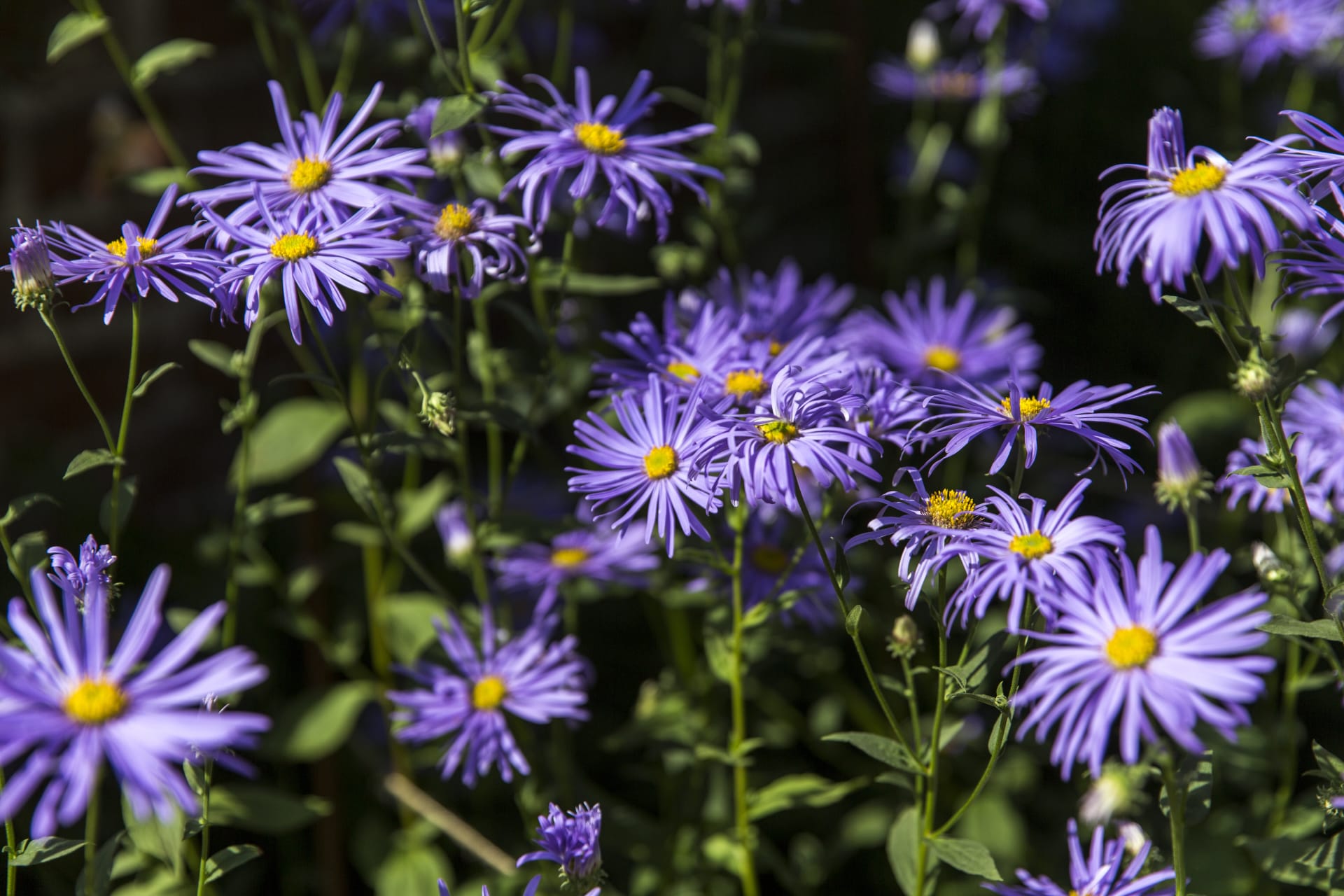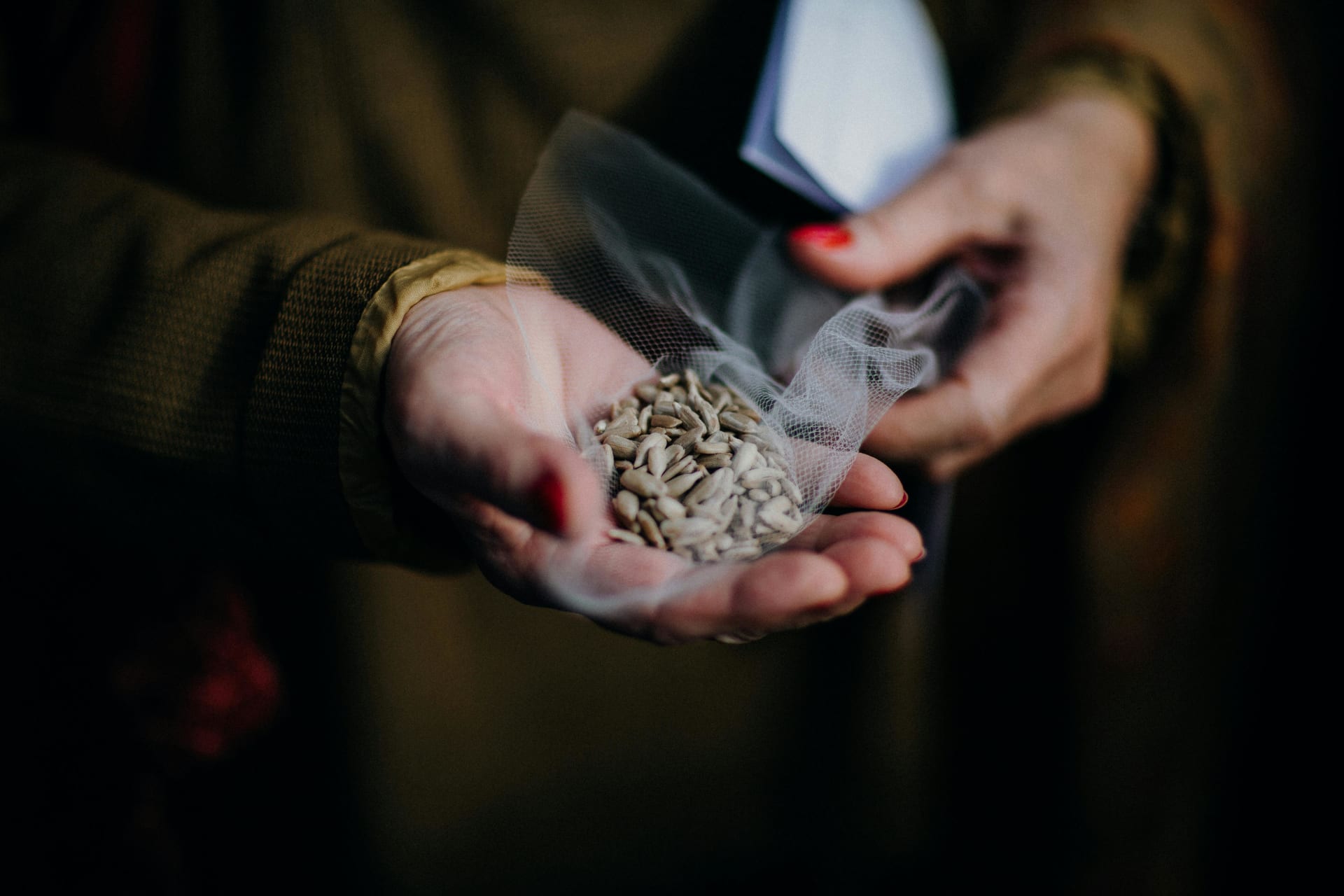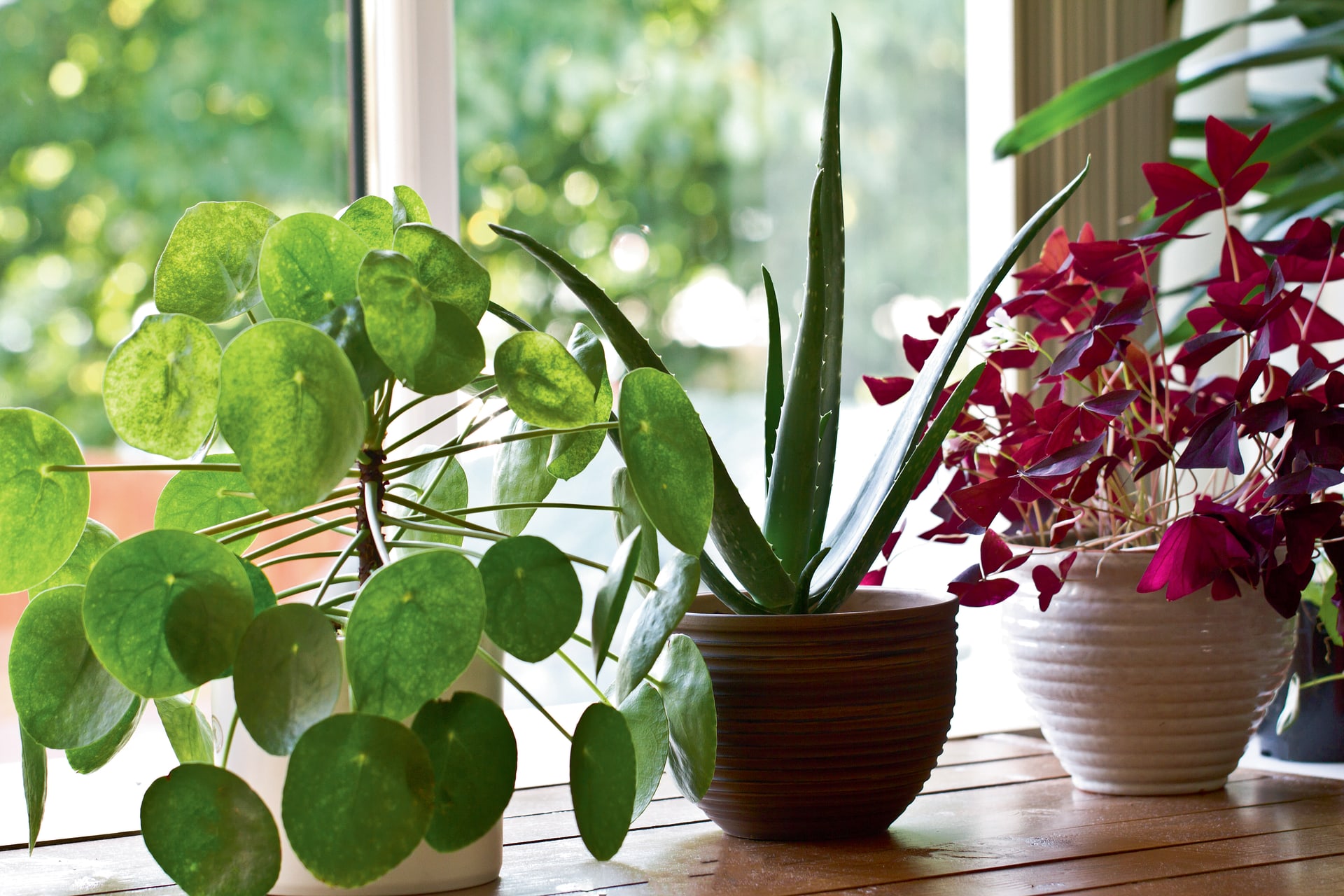Autumn is widely recognised as a season when deciduous tree foliage can put on a spectacular show as the days get shorter and the temperatures start to drop. However, there is a family of plants which can truly bring flower borders alive in September and October with their vibrant colours which range from dark blues and purples through to paler shades of lilac to pink and white. Some might know these spectacular and vibrant perennials as Michaelmas Daises as they bloom around the time of St Michael’s Day on the 29 September: gardeners know this, the second largest family of plants, as Asters (meaning star-like); part of the Asteraceae family of which there are over 100 different species with several varieties and different genera.
When you look closely at their heads when in flower, you will see each is made up of hundreds of tiny florets, creating the central disc. The petals, or ray florets, are arranged around the disc floret. Due to the flower colours, particularly the blue and mauve varieties, Asters are attractive to pollinators.
Before they became known as Michaelmas Daises in the 1920s, the plants which have a long history, were called Starwort. Over the years, some existing varieties have been renamed from Aster to Symphyotrichum. When it comes to selecting which to plant, you have five main groups to consider but we are focusing on the three most popular groups.
Aster amellus is the European Michaelmas Daisy which will grow in moderately fertile, well-drained soil in an open, sunny position. They are ideal for planting in flower borders, informal prairie gardens and wildlife gardens but do not tolerate sodden ground during winter months.

Aster Symphyotrichum novi belgii (formerly called Aster novi-belgii) are commonly called New York Aster and are the largest group in the Asteraceae family. Whilst you may expect this plant’s name to refer to Belgium, it is actually named after the land now known as New York State once called Belgica Foederata, the Latin name for the United Netherlands. This form of Aster will grow in moist, rich soils by preference in partial shade or preferably a sunny location. They require good air circulation to prevent powdery mildew on their leaves.
Symphyotrichum novae anglicae (formerly called Aster novae-angliae), commonly known as the New England Aster, are native to central and eastern North America. These plants will benefit from being mulched in autumn and they will not tolerate waterlogging during the winter months.
During the late Victorian era and Edwardian times, Asters were frequently favoured by the famous gardeners at the time, including Gertrude Jekyll. However, thanks to Ernest Ballard, the founder of Old Court Nurseries in Herefordshire that varieties of Aster novi belgii were greatly improved. He bred shorter plants with strong colours and more shapely flowering sprays. Following the Second World War, Percy Picton took over the nursery and introduced numerous new varieties onto the market, making these fabulous plants popular again until the 1970s when they fell out of fashion once more.
Although many cultivars were lost, thanks to the dedication of Miss Isabel Allen and Miss Joy Huish who lived in Bristol and had been collecting Asters since the 1940s. Miss Allen and Miss Huish held many rare varieties which became the first National Collection of Asters. In the 1980s, part of their National Collection was gifted by Miss Allen to the National Trust’s Upton House near Banbury. Other species went to Temple Newham Gardens in Leeds and Picton Gardens in Colwall, still owned by the Picton family.
Now, thanks to the dedication and hard work of Upton House’s Head Gardener Heather Aston, the original three species Aster amellus, Symphyotrichum cordiofolium and Symphyotrichum ericoides continue to survive in Upton House’s magnificent gardens, many of which are planted in the 77m long, 2.5m wide Aster borders. They are grown in front of a north-facing wall on the lower terraces, interplanted with Miscanthus grasses and musk roses. In all, there are 35 different plants from the Heritage Collection, labelled and lined out in Upton House’s Kitchen Garden.
Heather Aston ensures that the neutral to alkaline soil is mulched annually but she does over winter the amellusvarieties, kept under cover in the glasshouses as they do not like continuous winter wet weather. The Symphyotrichumvarieties will tolerate winter rains provided that they have good drainage with grit and organic matter dug into the soil before planting. To keep the plants looking at their best, the gardening team at Upton House mulch the area around the plants with their own garden compost, feeding them with good organic fertilisers in the spring. Large groups of plants are split on a regular basis.

It’s worth a visit to this extraordinary garden to see Asters growing in such a spectacular long border. Amongst the collection, you will get to see many unusual and less common varieties, including:
A amellus brilliant, a European species with a tough compact habit and good drought resistance. Growing to a height of 60cm and spread of up to 60cm, the rayed pink flowers can bloom from August until the end of October. It is also resistant to mildew. A less common variety is A amellus Doktor Otto Petschek, a light mauve variety growing to a similar height. Another purple variety is A amellus September Glow and a deeper purple variety A amellus Ultramarine.
Amongst the Symphyotrichum cordifolium varieties, you will see Sy cordifolium Aldebaran which has masses of small pale lavender flowers in October held in narrow, woody spires. Reaching a height of up to 1.2m this plant not only has good mildew resistance but is also attractive to pollinators. Sy cordifolium Chieftain will grow to a height of 1.3m carrying masses of small, pale lilac-blue single flowers at the ends of dark green multi-branched stems. This plant is ideal for the back of the border interplanted with taller ornamental grasses to help support it. Sy cordifolium Sweet Lavender grows to 1.2m tall with open, arching sprays of small, lavender-blue flowers 2cm wide on lax stems, blooming from late summer until the autumn.
The Sy ericoides varieties include Sy ericoides Cinderella with pink rather than blue or mauve flowers, growing up to 1m tall and preferring not to grow in clay soil. Sy ericoides Erlkonig is another variety with long-lasting pale lilac flowers.
Although many of the varieties of Asters grown at Upton House are rare and not easily available (unless you purchase them from a specialist grower), visiting Upton House to see the Aster borders looking at their best is so inspirational that you will want to include some of these late flowering perennials in your own garden, wherever possible.
For further information and to book tickets to Upton House and Gardens, visit nationaltrust.org.uk









